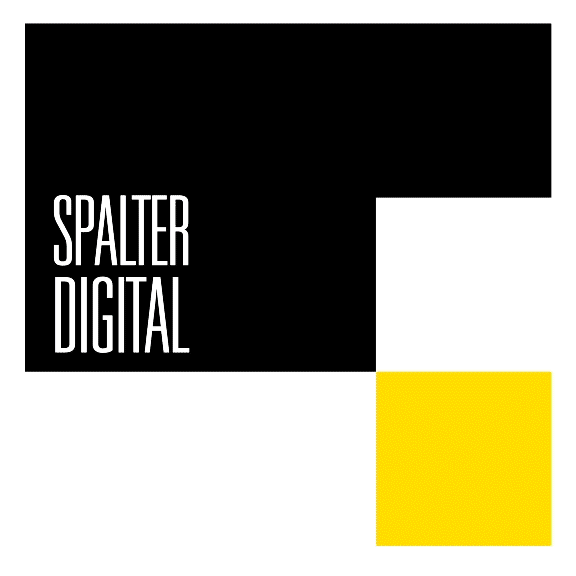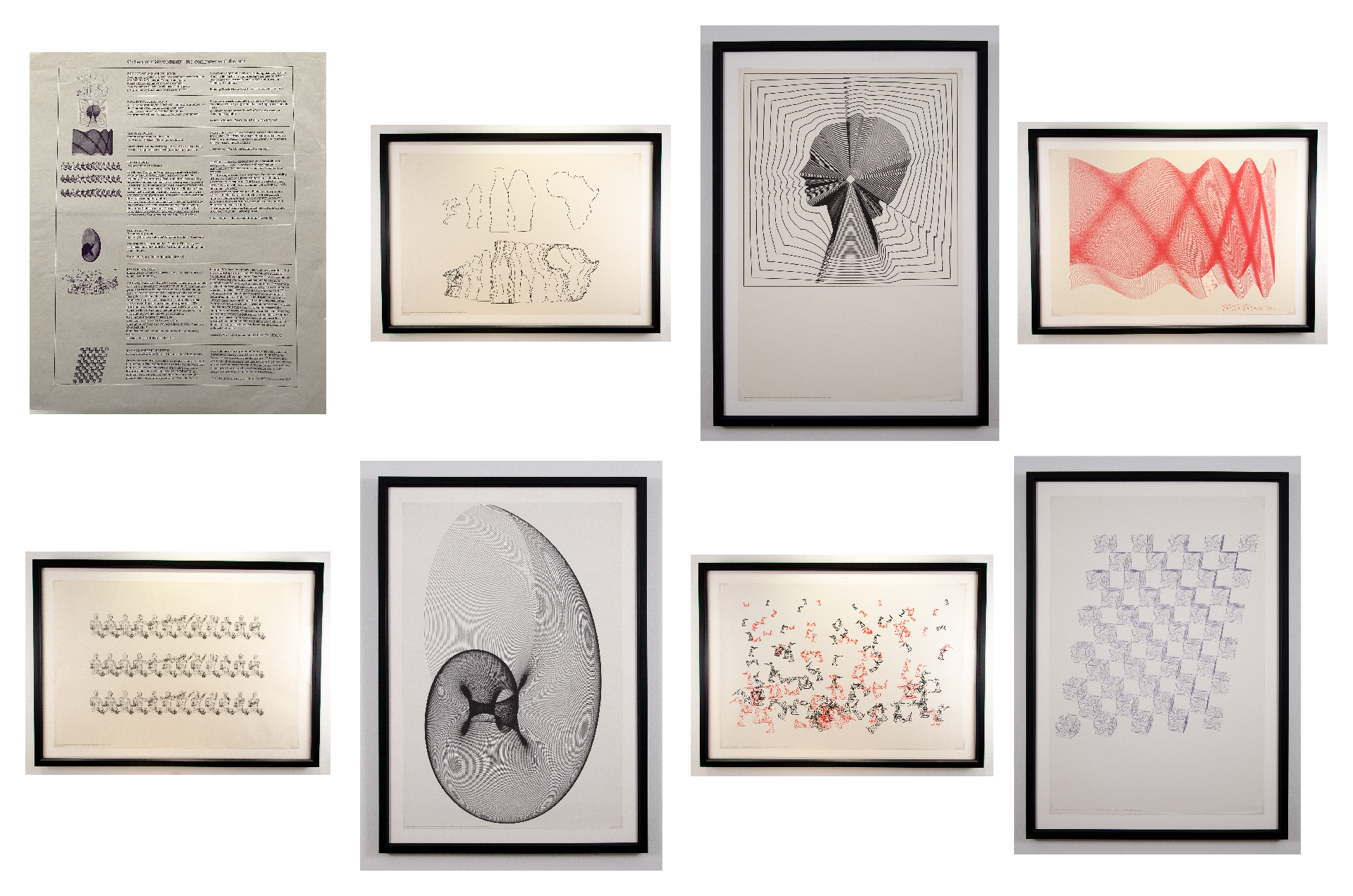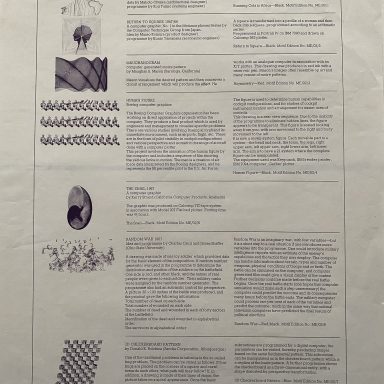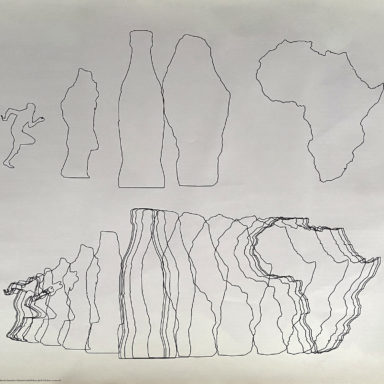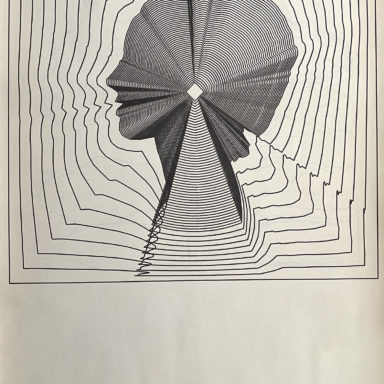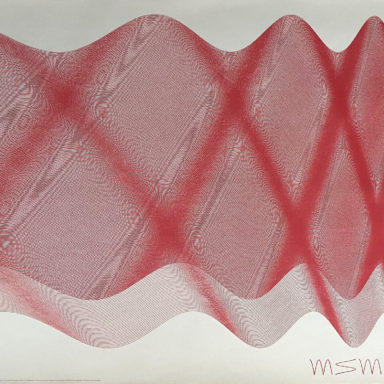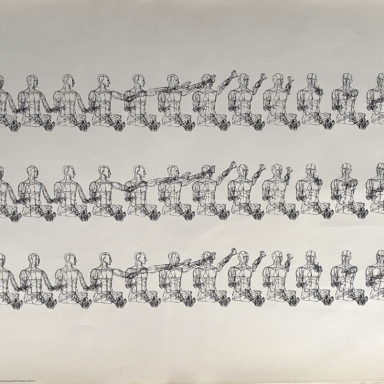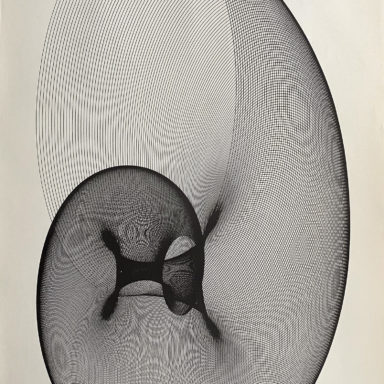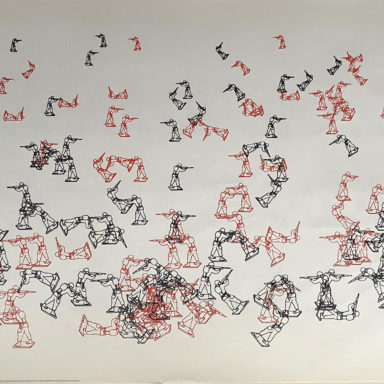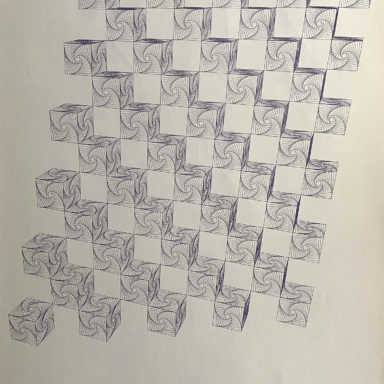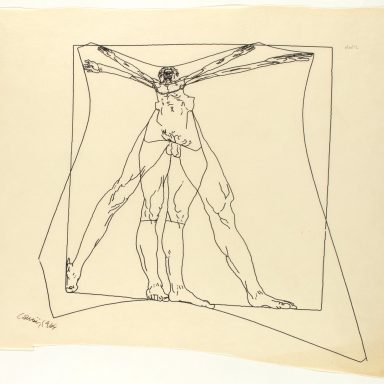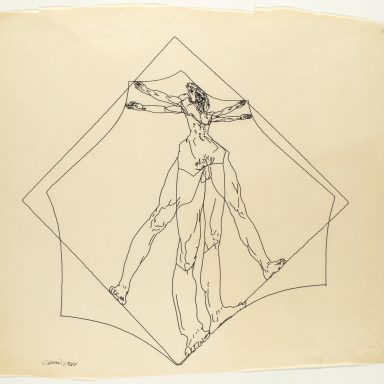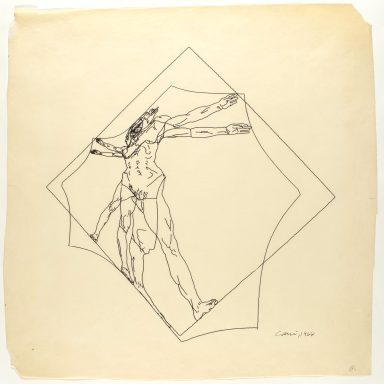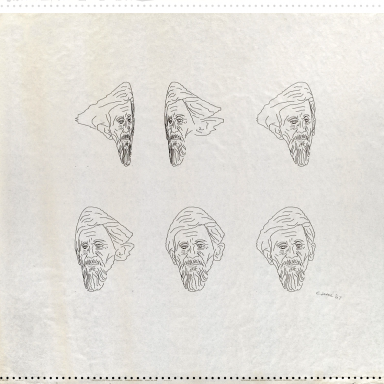Basic Information
Title: Cybernetic Serendipity (The Computer and the Arts) Portfolio
Artist(s):
Masao Kohmura
Makoto Ohtake
Koji Fujino
Maughan Sterling Mason
Kerry Strand
James Shaffer
Charles “Chuck” Csuri
Donald K. Robbins
Kunio Yamanaka
William Alan Fetter
Date Created: 1968
Edition Info:
1 - complete set
2 - complete set
3 - missing colophon page and original box
4 - complete framed set
Unframed Dimensions: 30 x 20 in.
Medium: lithograph on paper
Inventory ID: Serendipity-1968-00 (1, 2, 3, 4)
Description
a portfolio containing a colophon page and seven lithographs all after original unique computer-generated plotter drawings in a custom made box
printed and published by Motif Editions, London in 1968
each print has the artist name(s), title, date(s), associated university/company/location, and publishing information printed along the lower left edge of the paper
1. CTG – Computer Technique Group
Running Cola is Africa (No. 3 in the Metamorphoses Series)
idea by: Masao Komura (product designer)
data by: Makoto Ohtake (architectural designer)
programmed by: Koji Fujino (systems engineer)
generated in 1967/1968 at IBM Scientific Data Centre, Tokyo, Japan
software: FORTRAN IV
hardware: IBM 7090
output machine: CALCOMP 563 plotter
paper: Conqueror Paper, London watermark visible throughout paper
inventory # Komura/Ohtake/Fukino-1968-01 / Serendipity-1968-01
https://spalterdigital.com/artworks/running-cola-is-africa/
2. CTG – Computer Technique Group
Return to Square (No. 1 in the Metamorphoses Series)
idea by: Masao Komura (product designer)
programed by Kunio Yamanaka (aeronautic engineer)
generated in 1967/1968 at IBM Scientific Data Centre, Tokyo, Japan
software: FORTRAN IV
hardware: IBM 7090
output machine: CALCOMP 563 plotter
paper: Conqueror Paper, London watermark visible throughout paper
inventory # Komura/Yamanaka-1968-01 / Serendipity-1968-02
https://spalterdigital.com/artworks/return-to-square/
3. Maughan S. Mason / Thiokol Chemical Corporation, Utah
Asymmetry (Maughanogram)
signature printed within the image
generated in 1966
hardware: analog computer
output machine: XY plotter using a reservoir pen
inventory # Mason-1968-01 / Serendipity-1968-03
https://spalterdigital.com/artworks/asymmetry-red/
4. William Fetter / Boeing Computer Graphics
Panel of Human Figures
generated in 1968
hardware: keypunch, IBM reader printer, IBM 7094
output machine: Gerber plotter
paper: Conqueror Paper, London watermark visible throughout paper
inventory # Fetter-1968-01 / Serendipity-1968-04
https://spalterdigital.com/artworks/panel-of-human-figures/
5. Kerry Strand / California Computer Products
The Snail
generated in 1967
hardware: CALCOMP 770 tape system
output machine: CALCOMP 207 flatbed plotter
inventory # Strand-1968-01 / Serendipity-1968-05
https://spalterdigital.com/artworks/the-snail/
6. Charles Csuri & James Shaffer / Ohio State University
Random War
generated in 1967 at Ohio State University
hardware: IBM 7094
output machine: CALCOMP 565 drum plotter
inventory # Csuri/Shaffer-1968-01 / Serendipity-1968-06
https://spalterdigital.com/artworks/random-war/
7. Donald K. Robbins / Sandia Corporation
3D Checkerboard Pattern
generated in 1968
inventory # Robbins-1968-01 / Serendipity-1968-07
https://spalterdigital.com/artworks/3d-checkerboard-pattern/
In 1968, three years after the first computer art exhibitions had been held at small galleries in Stuttgart and New York, the first large and internationally recognized show of digital art took place in London. The Cybernetic Serendipity Exhibition was a milestone in the history of computer art. It was held between August 1 and October 20, 1968, at the ICA, the Institute of Contemporary Art, Nash House, The Mall, London. Jasia Reichardt, the curator of Cybernetic Serendipity, presented the complete bandwidth of early computer art by displaying works of 325 computer artists – from computer generated music, literature, graphics and films to different objects, sculptures and robots and also displaying state of the art hardware and its capabilities. The inspiration for this legendary show came from Max Bense, who had organized the first computer art exhibition in 1965 in Stuttgart, Germany, presenting works of Georg Nees. The London exhibition of Cybernetic Serendipity, which drew about 50,000 visitors, later traveled to the U.S. where a version of Cybernetic Serendipity was shown at the Corcoran Gallery in Washington D.C. and at The Exploratorium in San Francisco.
